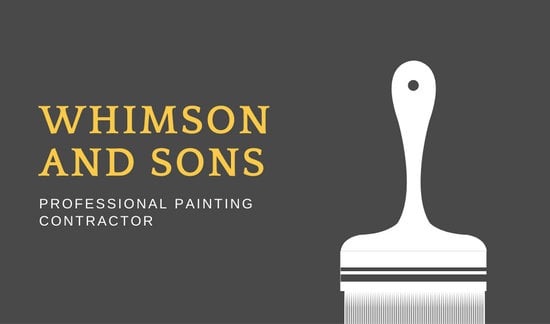Figure Out How Seasonal Aspects Influence Business Outside Paint Success And Discover The Very Best Times To Make Sure Long Lasting Results For Your Task
Figure Out How Seasonal Aspects Influence Business Outside Paint Success And Discover The Very Best Times To Make Sure Long Lasting Results For Your Task
Blog Article
Authored By-Burnham Whalen
When you're preparing a business outside painting task, seasonal factors can make or damage your results. You'll intend to take into consideration just how temperature and humidity impact paint application and drying times. Choosing how long does paint keep in the can can ensure your paint sticks appropriately and lasts longer. Yet which seasons are genuinely the best for this kind of job? Let's discover the crucial elements that can influence your job's success.
The Influence of Temperature on Paint Application
When you're preparing a commercial outside paint task, the temperature level can significantly affect exactly how well the paint sticks and dries.
Ideally, you want to paint when temperatures vary between 50 ° F and 85 ° F. If can a house be painted in the winter 's too cold, the paint may not cure appropriately, leading to issues like peeling off or breaking.
On the flip side, if it's as well hot, the paint can dry out too quickly, preventing proper attachment and leading to an unequal surface.
You need to also take into consideration the time of day; morning or late afternoon provides cooler temperature levels, which can be a lot more beneficial.
Constantly check the supplier's recommendations for the particular paint you're using, as they often give support on the ideal temperature level array for optimum outcomes.
Humidity and Its Result on Drying Times
Temperature level isn't the only ecological factor that influences your commercial exterior painting project; humidity plays a significant duty too. High humidity levels can slow down drying out times significantly, impacting the total high quality of your paint task.
When the air is saturated with wetness, the paint takes longer to cure, which can result in issues like inadequate attachment and a greater risk of mold development. If you're repainting on a particularly humid day, be planned for extended delay times in between layers.
It's vital to check local climate condition and strategy appropriately. Preferably, aim for humidity degrees between 40% and 70% for optimum drying out.
Keeping these factors in mind guarantees your project stays on track and supplies a long-term finish.
Best Seasons for Commercial Outside Painting Projects
What's the best time of year for your industrial outside painting projects?
Springtime and very early loss are commonly your best options. Throughout these seasons, temperature levels are moderate, and moisture levels are frequently reduced, creating ideal conditions for paint application and drying.
Stay clear of summer's intense heat, which can cause paint to dry as well rapidly, causing inadequate attachment and finish. In a similar way, winter's cold temperatures can impede appropriate drying and curing, taking the chance of the longevity of your paint work.
Aim for days with temperature levels in between 50 ° F and 85 ° F for optimal outcomes. Remember to examine the regional weather prediction for rainfall, as wet conditions can spoil your job.
Planning around these elements ensures your paint project runs efficiently and lasts longer.
Final thought
Finally, preparing your commercial exterior paint jobs around seasonal considerations can make a substantial distinction in the result. By organizing job during the ideal temperatures and moisture degrees, you'll ensure far better bond and drying times. Remember to keep an eye on regional weather forecasts and select the right time of year-- springtime and early autumn are your best options. Taking these actions will help you accomplish a sturdy and expert coating that lasts.
